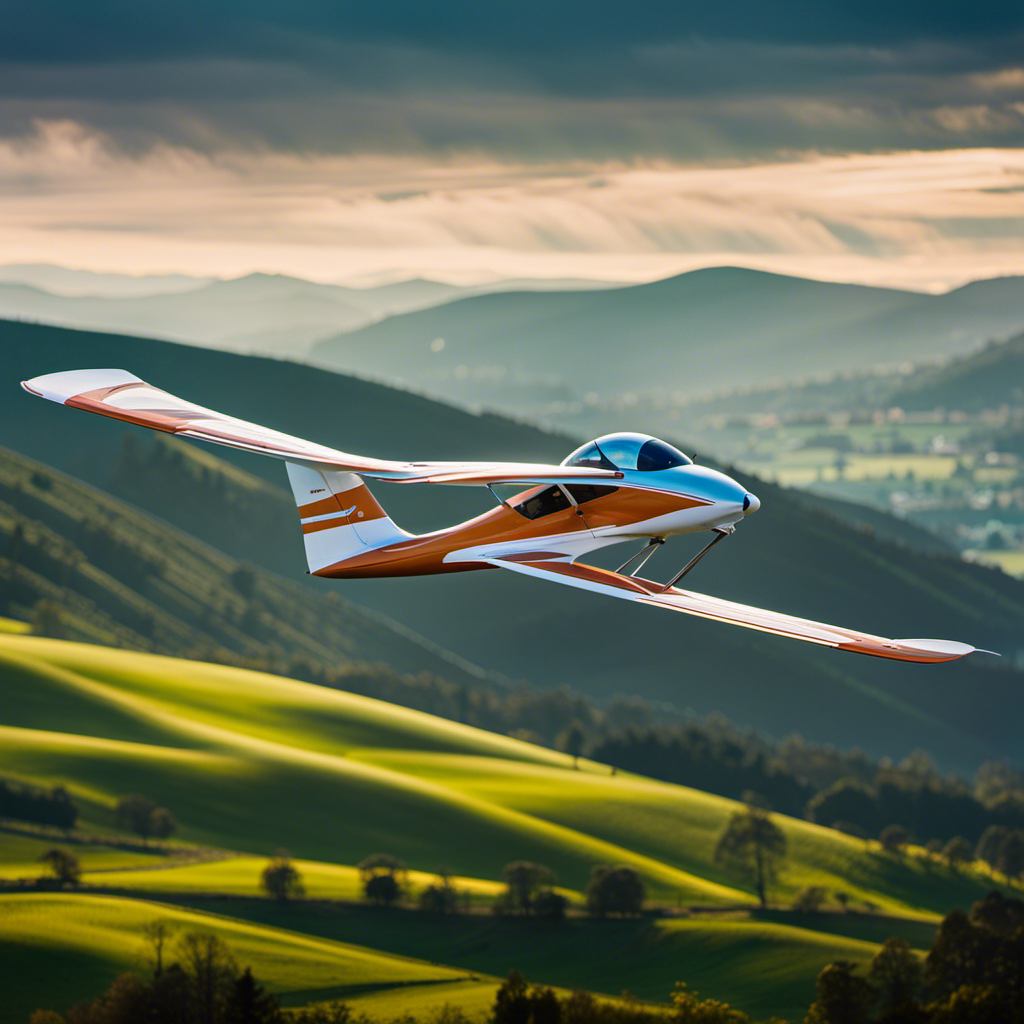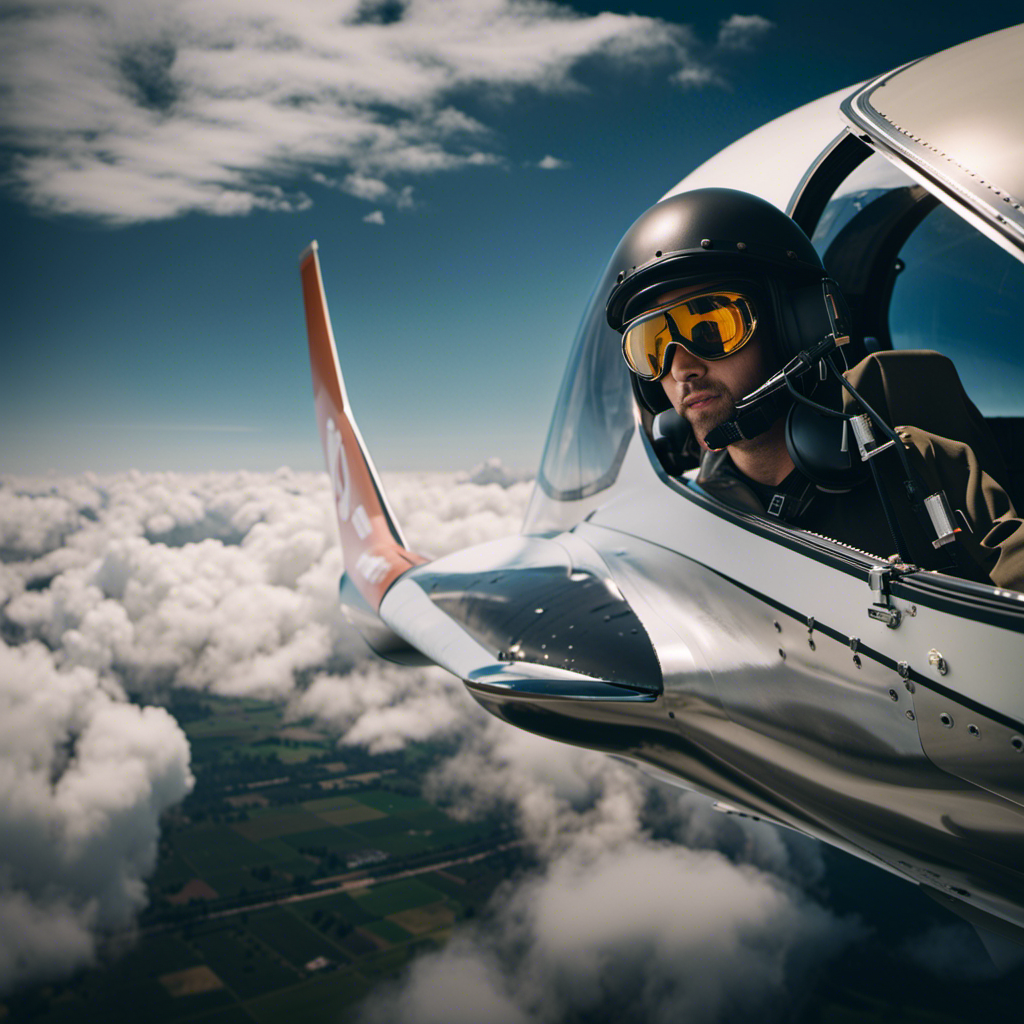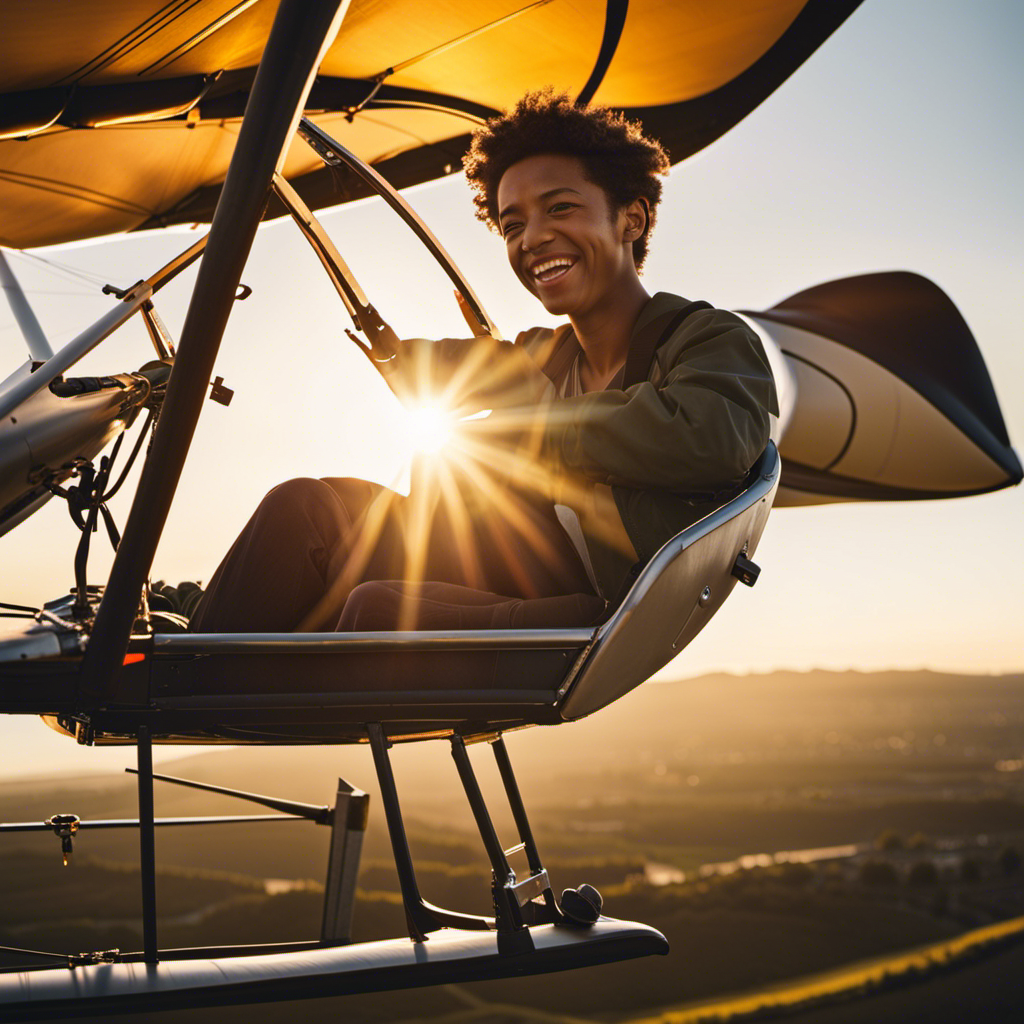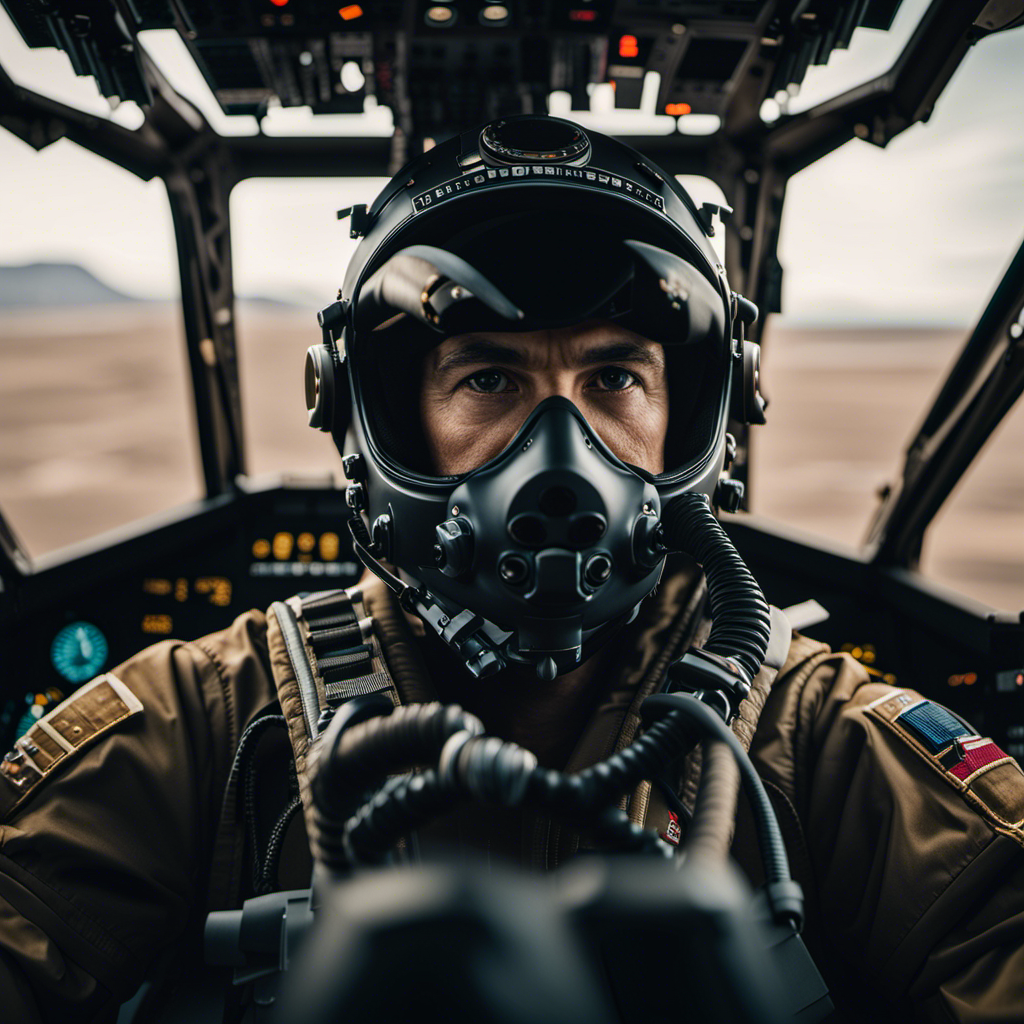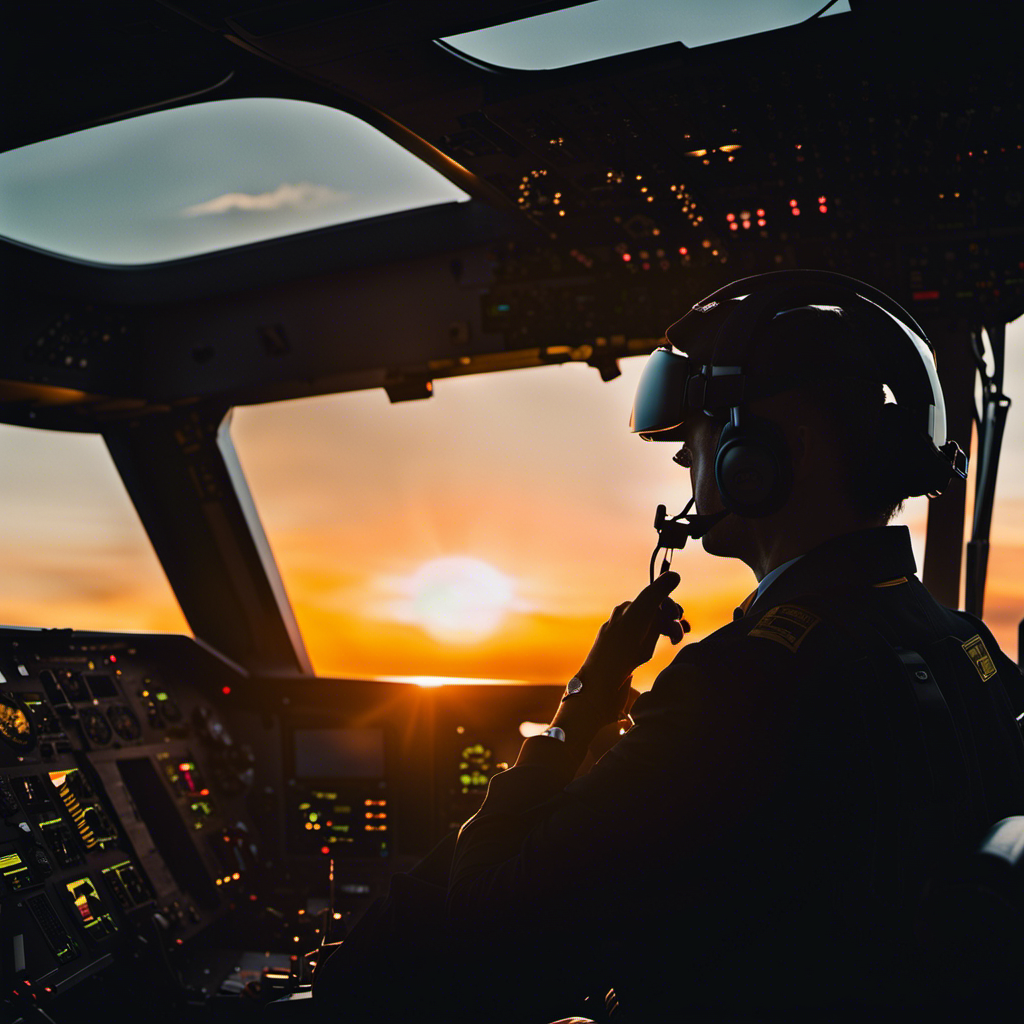As a glider pilot, I have always been fascinated by the idea of gliders being able to embark on cross-country flights. This intrigue can be fulfilled by exploring the intricate scientific principles of glider aviation and the tactics employed for extended flying. Understanding meteorology, maximizing the glider’s performance and energy efficiency, and following important safety procedures are crucial aspects to consider.
In this article, we’ll explore the world of gliding, from the technical aspects to the record-breaking achievements of cross country gliding. So fasten your seatbelt and let’s embark on this soaring adventure.
Key Takeaways
- Gliders rely on principles of physics to generate lift and can fly without an engine.
- Gliders use thermals, ridge lift, and wave lift to gain altitude and maintain altitude during cross country flights.
- Understanding weather patterns and analyzing thermals are crucial for successful glider flight.
- Glider performance and efficiency are affected by factors such as wind patterns, air density, wing shape, and angle of attack.
The Science Behind Glider Flight
You might be wondering how gliders are able to fly without an engine. Well, it all comes down to the science of glider aerodynamics and lift generation.
Gliders are designed in a way that allows them to generate lift using the basic principles of physics. As air flows over the wings of a glider, it creates a difference in pressure between the upper and lower surfaces. This pressure difference generates lift, which allows the glider to stay aloft.
By manipulating the shape and angle of the wings, pilots can control the amount of lift being generated. This is crucial for gliding techniques used in cross country flying, where pilots rely on thermals, ridge lift, and wave lift to stay airborne and cover long distances without an engine.
Transitioning into the subsequent section, these gliding techniques are essential for efficient cross country flying.
Gliding Techniques for Cross Country Flying
To cover long distances, gliders typically use specific techniques when flying across different areas. These techniques include utilizing thermals and ridge soaring, as well as employing effective navigation and flight planning strategies.
When it comes to thermals, glider pilots search for areas of rising warm air to gain altitude. By circling within these thermals, they can climb higher and maintain their altitude for longer periods of time.
Ridge soaring, on the other hand, involves flying along the slopes of hills or mountains, using the upward wind that is generated by the wind hitting the slope. This technique allows gliders to maintain altitude and even gain speed.
In terms of navigation and flight planning, glider pilots carefully study maps, weather forecasts, and wind patterns to determine the most efficient routes and make adjustments during the flight.
By understanding these gliding techniques and mastering navigation skills, glider pilots can successfully fly cross country.
Moving on to understanding weather patterns for glider flight…
Understanding Weather Patterns for Glider Flight
Understanding weather patterns is crucial for successful glider flight. Weather forecasting and thermals analysis are essential tools in determining the best conditions for gliding.
As a glider pilot, I rely on accurate weather forecasts to plan my flights. I study weather charts and satellite imagery to identify areas of rising air, known as thermals, which can provide the lift needed to sustain flight. By analyzing the vertical development of clouds and wind patterns, I can anticipate the strength and location of thermals. This knowledge allows me to navigate efficiently and stay aloft for longer periods, maximizing my glider’s performance and efficiency.
Transitioning to the next section, optimizing glider performance and efficiency requires careful consideration of various factors.
Glider Performance and Efficiency
By analyzing wind patterns and air density, you can maximize the performance and efficiency of your glider. Glider aerodynamics play a crucial role in achieving a high glide ratio, which is the distance a glider can travel horizontally for a given altitude loss.
To maximize glide ratio, it is important to understand the concept of lift and how it is affected by the shape of the glider’s wings and the angle of attack. By adjusting the angle of attack and taking advantage of thermals, ridge lift, and wave lift, glider pilots can increase their glider’s performance and achieve longer flights.
Additionally, minimizing drag by maintaining clean and streamlined surfaces, reducing unnecessary weight, and optimizing the center of gravity can further enhance glider efficiency. These factors are vital for successful cross country gliding, where maximizing performance and efficiency allows for longer and more rewarding flights.
Transitioning into the subsequent section about safety measures for cross country gliding, it is crucial to prioritize the well-being of the pilot and the glider throughout the journey.
Safety Measures for Cross Country Gliding
Transitioning into the safety measures section, it’s crucial to prioritize the well-being of the pilot and the glider throughout the journey. To ensure a safe cross country gliding experience, there are several key safety measures that need to be implemented:
-
Emergency procedures: It is essential for pilots to be trained in emergency procedures such as how to handle a sudden loss of altitude or how to deal with an in-flight emergency. This knowledge and training can be the difference between life and death in critical situations.
-
Equipment maintenance: Regular and thorough equipment maintenance is imperative to ensure the glider is in optimal condition. This includes checking the wings, control surfaces, and control systems for any signs of wear or damage that could compromise safety.
-
Pre-flight inspections: Before each flight, a comprehensive pre-flight inspection must be carried out to identify any potential issues or abnormalities. This includes checking the integrity of the glider’s structure, inspecting the cockpit instruments, and ensuring all necessary safety equipment is on board.
Transitioning from the discussion of safety measures, it is important to highlight the remarkable record-breaking cross country gliding achievements that have been accomplished.
Record-Breaking Cross Country Gliding Achievements
As a glider pilot, I understand the importance of safety measures when embarking on cross country flights. However, it is also fascinating to explore the incredible achievements of glider pilots who have pushed the boundaries with record-breaking distances.
These exceptional flights have showcased the capabilities of gliders and the skill of the pilots involved. One notable record-breaking flight was accomplished by Klaus Ohlmann, who flew an astonishing 3,008 kilometers in a glider, setting a new world record.
Achievements like these are made possible through meticulous planning and the use of advanced navigation techniques. Glider pilots rely on instruments such as GPS and variometers to navigate and make strategic decisions during their flights.
They carefully analyze weather patterns, wind directions, and thermal activity to optimize their routes and maximize their glider’s performance. These navigation techniques, coupled with the pilot’s expertise, contribute to the success of record-breaking glider distances.
Frequently Asked Questions
What is the maximum weight a glider can carry?
The maximum weight a glider can carry, also known as its payload capacity, is determined by its design and construction. Glider weight limitations are crucial for safe and efficient flight operations.
How long can a glider stay in the air without any power source?
Without any power source, a glider can stay in the air for hours, even days, relying solely on its glider endurance and the skill of the pilot. The glider’s altitude plays a crucial role in maximizing its flight time.
Are there any specific age restrictions for flying a glider cross country?
Age restrictions for flying a glider cross country vary by country. Safety measures such as proper training, experience, and a minimum age limit ensure that pilots have the necessary skills and maturity to handle long-distance flights safely.
What is the cost of owning and maintaining a glider for cross country flying?
Maintaining a glider for cross country flying can be costly. A friend once compared it to owning a luxury car, with annual expenses averaging around $5,000-$10,000 for inspections, repairs, and insurance. Regular maintenance is crucial to ensure safety and optimal performance.
Can gliders fly at night?
Yes, gliders can fly at night, but it requires proper training and adherence to safety concerns. Night flying in gliders presents additional challenges due to reduced visibility, so pilots must be proficient in instrument flying techniques.
Conclusion
In conclusion, glider flight is not only possible but also exhilarating when embarking on cross country journeys. By utilizing advanced gliding techniques, understanding weather patterns, and optimizing glider performance, pilots can achieve remarkable distances.
Safety measures are paramount in this high-stakes endeavor, ensuring a smooth and secure flight. With record-breaking achievements dotting the history of cross country gliding, it is clear that these soaring machines have the ability to defy gravity and take us to new heights.
So spread your wings and let the sky be your playground!
With a heart that soars as high as the skies, Aria, affectionately known as “Skylark,” is the driving force behind Soaring Skyways. Her journey into the gliding world began as a young dreamer gazing up at the soaring birds, yearning to experience the weightlessness and freedom they embodied. With years of experience both in the cockpit and behind the scenes, Aria’s commitment to the gliding community is unwavering.
